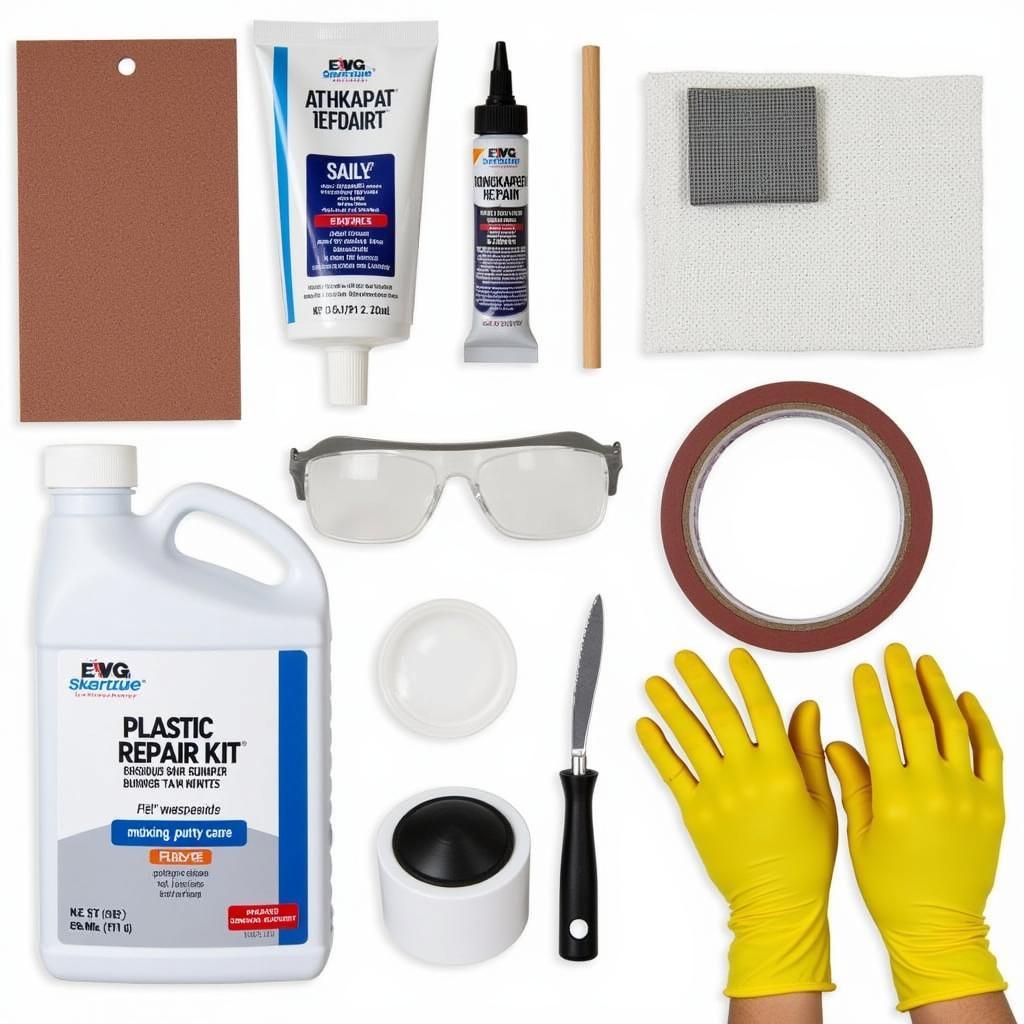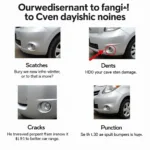Repairing a plastic bumper yourself can save you a significant amount of money compared to taking it to a professional. It’s a surprisingly manageable task, even for beginners, as long as you have the right tools and follow the correct steps. This guide will provide a comprehensive overview of how to repair a plastic bumper on a car, covering everything from minor scratches to more substantial cracks.
Learning how to repair a plastic bumper on a car not only saves you money but also gives you a sense of accomplishment. From assessing the damage to prepping the surface and applying the right repair materials, this guide will equip you with the knowledge and confidence to tackle the job head-on. Whether you’re dealing with a small crack, a deep gash, or just a few unsightly scratches, we’ll cover the appropriate techniques and materials needed. We’ll also address common questions and provide expert advice to ensure you achieve professional-looking results. See our guide on how to repair plastic car bumper for a quick overview of the process.
Assessing the Damage: Know Your Bumper
Before starting any repair, it’s crucial to assess the extent of the damage. Is it a minor scratch, a deep crack, or a dent? The type and severity of the damage will dictate the repair method and materials you’ll need. A simple scratch might only require some sanding and touch-up paint, while a larger crack might need a plastic repair kit or even some bondo to repair a plastic car bumper.
Gathering Your Tools and Materials
Having the right tools and materials is essential for a successful repair. Depending on the damage, you might need sandpaper, plastic filler, primer, paint, masking tape, a heat gun or soldering iron (for plastic welding), and a car bumper plastic repair kit.
Preparing the Bumper for Repair
Clean the damaged area thoroughly with soap and water, then dry it completely. For more stubborn dirt and grime, use a degreaser. If there are any loose or jagged pieces of plastic, carefully trim them away with a sharp knife or sandpaper. Masking the area around the damage will protect the surrounding paint from scratches and overspray. This preparation step is crucial for ensuring proper adhesion of the repair materials.
Repairing Minor Scratches and Scuffs
Minor scratches can often be buffed out with a rubbing compound. For deeper scratches, you might need to use sandpaper to smooth out the surface before applying touch-up paint. Check out our guide on how to repair a scratch on a car plastic bumper for a detailed walkthrough.
Repairing Cracks and Holes
Repairing cracks and holes requires a more involved process. A plastic repair kit often comes with a reinforcing mesh and a two-part epoxy or filler. Follow the instructions carefully, ensuring proper mixing and application. For smaller chips, see our guide on how to repair small chips in car plastic bumper.
Sanding, Priming, and Painting
Once the filler has dried and cured, sand the area smooth. Then, apply a primer to promote paint adhesion and ensure a uniform finish. Finally, apply several thin coats of paint, allowing each coat to dry before applying the next.
Frequently Asked Questions (FAQ)
- What is the best plastic repair kit for car bumpers? There are many reputable brands available. Choose one that includes a reinforcing mesh and a high-quality epoxy or filler.
- Can I repair a severely damaged bumper myself? While DIY repairs are possible for many types of bumper damage, extremely severe damage might require professional attention.
- How long does the repair process take? The time required depends on the extent of the damage, but most DIY repairs can be completed within a day or two.
- Do I need a heat gun for plastic bumper repair? A heat gun can be helpful for reshaping deformed plastic and for certain types of plastic welding.
- How much does it cost to repair a plastic bumper? DIY repairs are significantly cheaper than professional repairs, often costing less than $100.
- How can I prevent future bumper damage? Careful driving and parking are the best ways to prevent future damage.
- What is the difference between plastic filler and Bondo? While both can be used for plastic repair, plastic filler is specifically formulated for plastics, while Bondo is generally used for metal repair.
In conclusion, learning how to repair a plastic bumper on a car is a valuable skill that can save you money and empower you to handle minor car repairs yourself. While the process might seem daunting at first, by following these steps and using the right materials, you can achieve professional-looking results. Remember to always assess the damage carefully and choose the appropriate repair method for the best outcome.
For further assistance, feel free to explore other related articles on our website or contact us directly via WhatsApp: +1(641)206-8880, or Email: [email protected]. Our 24/7 customer support team is always ready to assist you.



